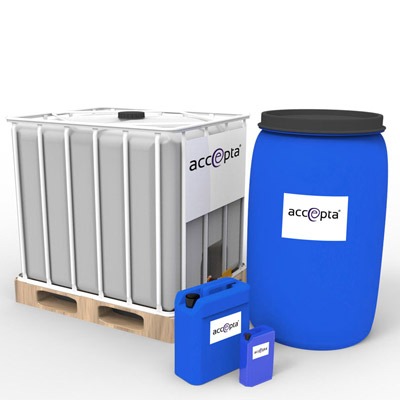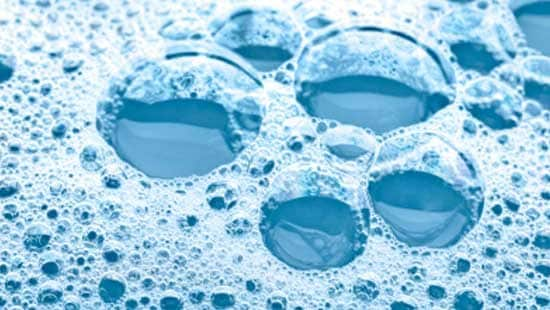Usual Challenges in Foam Control and Just How to Get rid of Them Successfully
Effective Approaches for Attaining Ideal Foam Control in Chemical Manufacturing
Reliable foam control is a critical aspect of chemical manufacturing that can substantially influence production performance and product quality. By recognizing the mechanisms of foam formation and selecting proper anti-foaming representatives, suppliers can take positive steps to reduce too much foam.
Understanding Foam Formation

Surfactants, or surface-active agents, lower the surface stress of the liquid, promoting bubble stability and advertising foam generation. Furthermore, anxiety or blending procedures can enhance bubble development, usually aggravating foam issues. The features of the liquid medium, consisting of viscosity and density, more impact foam habits; as an example, even more thick liquids have a tendency to catch air better, leading to increased foam stability.
Understanding these fundamental facets of foam formation is essential for reliable foam control in chemical manufacturing. By identifying the problems that advertise foam development, manufacturers can execute targeted strategies to minimize its negative effects, thereby maximizing production processes and ensuring constant product top quality. This fundamental understanding is essential prior to exploring certain techniques for managing foam in commercial setups.
Selection of Anti-Foaming Representatives
When picking anti-foaming agents, it is essential to think about the specific attributes of the chemical procedure and the sort of foam being created (Foam Control). Various elements influence the efficiency of an anti-foaming representative, including its chemical structure, temperature level security, and compatibility with various other process materials
Silicone-based anti-foams are widely utilized as a result of their high performance and wide temperature level array. They work by lowering surface area tension, allowing the foam bubbles to integrate and damage more easily. However, they may not be ideal for all applications, particularly those entailing sensitive formulas where silicone contamination is a worry.
On the other hand, non-silicone representatives, such as mineral oils or natural compounds, can be beneficial in details scenarios, specifically when silicone residues are undesirable. These representatives often tend to be less effective at higher temperatures however can give effective foam control in other problems.
Additionally, comprehending the foam's beginning-- whether it arises from aeration, agitation, or chemical reactions-- overviews the selection process. Examining under actual operating problems is vital to guarantee that the selected anti-foaming agent satisfies the special requirements of the chemical manufacturing process effectively.
Process Optimization Strategies
Effective foam control is a vital element of optimizing chemical production processes. By fine-tuning these specifications, drivers can minimize turbulence, thus minimizing foam development throughout blending.
In addition, managing temperature and stress within the system can substantially impact foam generation. Lowering the temperature might reduce the volatility of certain elements, bring about lowered foam. Maintaining ideal stress levels assists in reducing excessive gas release, which contributes to foam stability.
One more reliable approach is the critical enhancement of anti-foaming representatives at vital stages of the procedure. Mindful timing and dose can make sure that these representatives effectively subdue foam without disrupting other process specifications.
In addition, integrating a systematic evaluation of basic material homes can Get More Information help identify naturally frothing substances, permitting for preemptive measures. Lastly, carrying out regular audits and process evaluations can expose ineffectiveness and areas for enhancement, making it possible for constant optimization of foam control approaches.
Monitoring and Control Equipment
Monitoring and control systems play a vital function in preserving ideal foam monitoring throughout the chemical production process. These systems are necessary for real-time monitoring and change of foam levels, guaranteeing that production effectiveness is optimized while reducing disturbances triggered by too much foam formation.
Advanced sensing units and instrumentation are employed to find foam density and elevation, giving important data that notifies control formulas. This data-driven strategy permits for the timely application of antifoaming representatives, ensuring that foam degrees continue to be within acceptable limitations. By incorporating surveillance systems with procedure control software program, producers can apply automated reactions to foam changes, decreasing the demand for hands-on treatment and boosting functional consistency.
In addition, the assimilation of equipment understanding and anticipating analytics into checking systems can assist in positive foam monitoring. By analyzing historic foam information and operational criteria, these systems can anticipate foam generation patterns and suggest preemptive steps. Regular calibration and upkeep of monitoring equipment are important to ensure accuracy and dependability in foam detection.
Ultimately, effective surveillance and control systems are vital for optimizing foam control, advertising safety, and improving overall productivity in chemical manufacturing environments.

Situation Researches and Ideal Practices
Real-world applications of monitoring and control systems highlight the importance of foam administration in chemical production. A notable instance research entails a massive pharmaceutical producer that applied an automated foam discovery system.
Another excellent case originates from a petrochemical business that took on a combination of antifoam agents and process optimization strategies. By assessing foam generation patterns, the organization customized its antifoam dosage, get redirected here causing a 25% view website decrease in chemical use and considerable price savings. This targeted method not only reduced foam disturbance however likewise improved the overall stability of the manufacturing process.

Final Thought
Finally, attaining ideal foam control in chemical production necessitates a thorough approach encompassing the option of ideal anti-foaming agents, execution of process optimization methods, and the integration of advanced monitoring systems. Regular audits and training further enhance the effectiveness of these strategies, fostering a society of continual enhancement. By resolving foam development proactively, producers can substantially enhance manufacturing efficiency and item quality, eventually adding to even more sustainable and cost-efficient operations.
By comprehending the devices of foam formation and picking proper anti-foaming representatives, makers can take proactive actions to reduce extreme foam. The qualities of the fluid tool, consisting of viscosity and thickness, more impact foam habits; for instance, more viscous fluids tend to catch air a lot more successfully, leading to raised foam stability.
Comprehending these essential elements of foam formation is important for reliable foam control in chemical manufacturing. By analyzing historical foam information and operational specifications, these systems can anticipate foam generation patterns and recommend preemptive steps. Foam Control. Normal audits of foam control gauges make certain that processes stay maximized, while fostering a society of positive foam monitoring can lead to lasting renovations across the production range